Travel Guide: Bolivia
Bolivia(Bolivia), located in the heart of South America, is a country filled with breathtaking landscapes. From vast salt flats to stunning colonial cities, this landlocked country has plenty to offer adventurous travelers. Let’s go over the top four destinations you shouldn't miss on your journey to this South American gem!
Questions This Article Answers
What should I do in Bolivia?
What should I visit in La Paz?
Why is Bolivia landlocked?
What to see in the Salar de Uyuni?
What are the most popular landmarks in Bolivia?
What to do in Potosí?
What to visit in Sucre?
La Paz: High-Altitude Adventure
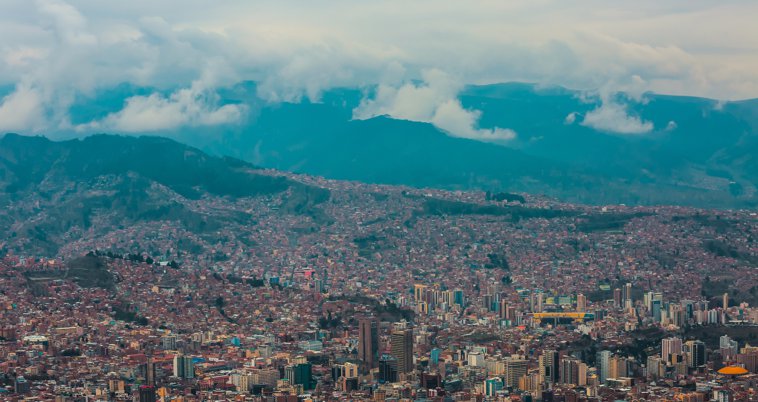 La Paz(La Paz), the world's highest capital at around 11,975 feet (3,650 meters) above sea level, is a city of dramatic landscapes and thrilling experiences.
La Paz(La Paz), the world's highest capital at around 11,975 feet (3,650 meters) above sea level, is a city of dramatic landscapes and thrilling experiences.
A good place to start your journey is the iconic El Mercado de las Brujas(The Witches Market). Here, local healers known as yatiri sell a range of unique items, including remedios tradicionales(traditional remedies), pociones(potions), and plantas medicinales(medicinal plants). But be warned! Among the most popular items sold at this market are sullus, dried llama fetuses used as offerings to Pachamama(Pachamama), or Mother Earth.
As you explore La Paz, you can take a visit to the Museo de la Coca(Coca Museum) to learn about the history and cultural significance of coca leaves in Bolivia. Among their various uses, coca leaves have been employed for centuries to alleviate the symptoms of altitude sickness—something you're quite likely to encounter in this high-altitude city if you're not accustomed to it. Chewing coca leaves or brewing coca tea is a centuries-old practice believed to offer relief from the challenges of living at great heights.
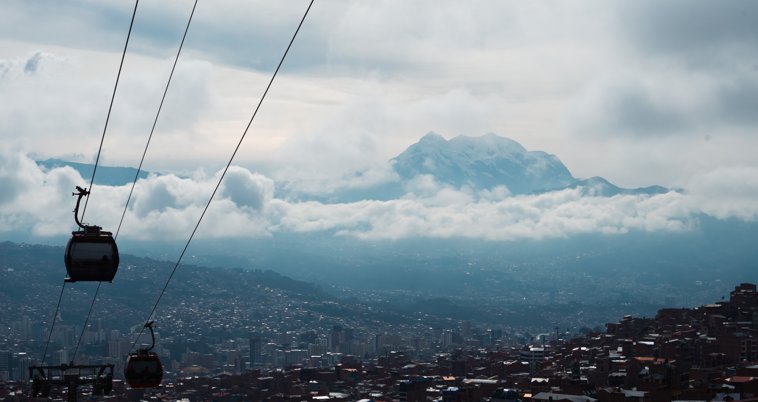 For breathtaking views of the city and the surrounding mountains, you can hop on Mi Teleférico(literally, My Cable Railway), one of the world's highest cable car networks. It's a truly unforgettable experience that provides an aerial perspective of La Paz like no other.
For breathtaking views of the city and the surrounding mountains, you can hop on Mi Teleférico(literally, My Cable Railway), one of the world's highest cable car networks. It's a truly unforgettable experience that provides an aerial perspective of La Paz like no other.
Adrenaline junkies will want to tackle Bolivia's famous Camino de la Muerte(Death Road), a thrilling cycling adventure that takes you from the high-altitude plains to the tropical Yungas region. And if you're looking for cultural immersion, you can wander through the historic city center, where you'll find the stunning Basílica de San Francisco(Basilica of San Francisco), among other historic buildings, and the vibrant plaza Murillo(Plaza Murillo). While the plaza is surrounded by important government buildings, perhaps its main attraction are the thousands of palomas(pigeons) that call the plaza home. These little city dwellers draw laughter and delight as they playfully interact with visitors and locals alike.
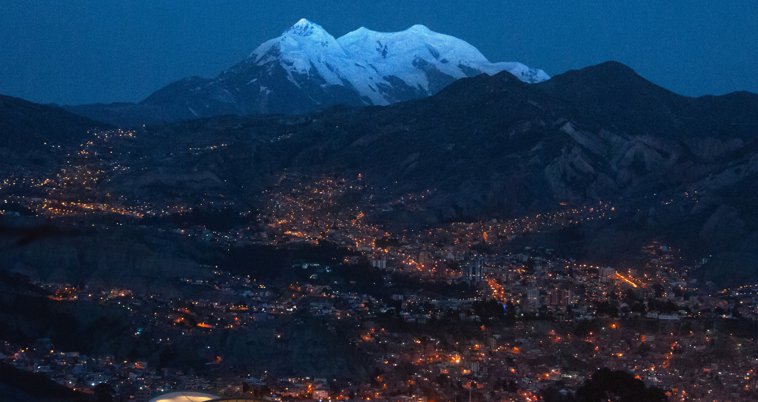 Other places to visit are the famous calle Jaén(Jaen Street), a colonial alley dotted with bars and museums, the Museo Nacional de Arte(National Art Museum), the Museo Nacional de Etnografía y Folklore(National Museum of Ethnography and Folklore), and the Museo Litoral Boliviano(Museum of the Bolivian Coast).
Other places to visit are the famous calle Jaén(Jaen Street), a colonial alley dotted with bars and museums, the Museo Nacional de Arte(National Art Museum), the Museo Nacional de Etnografía y Folklore(National Museum of Ethnography and Folklore), and the Museo Litoral Boliviano(Museum of the Bolivian Coast).
Museo Litoral Boliviano
Bolivia, now a landlocked country, once had access to the sea. The Museo Litoral Boliviano in La Paz tells the story of the War of the Pacific (1879–1884), during which Bolivia lost its coastal territories, which included vital access to the Pacific Ocean, to Chile. This historical event significantly influences Bolivia's national identity and politics to this day.
Also, make sure to visit the Miraflores(Miraflores) neighborhood, where you can find contemporary architecture, upscale restaurants, and trendy boutiques. Other neighborhoods to check out are San Jorge(San Jorge), Calacoto(Calacoto), and Sopocachi(Sopocachi).
Finally, don’t leave La Paz without taking a picture of the imposing Illimani(Illimani), the snowy peak that looks over the city.
Las Alasitas
If you’re lucky enough to visit La Paz around early February, you’re in for an incredible experience! The Feria de las Alasitas(Alasitas Fair) is a vibrant annual fair that starts on January 24th, the feast day of Ekeko, the god of abundance, and continues through February.
At the fair, you'll find miniature versions of everything from houses and cars to money and passports, most meticulously crafted by local artisans. These miniatures, which are blessed and offered to Ekeko, represent people's hopes and dreams for the year. It's a lively and enchanting celebration of Bolivian culture that offers a unique glimpse into the local traditions and beliefs!
Here’s some vocabulary related to La Paz to get you going:
Potosí: City of Silver and Mines
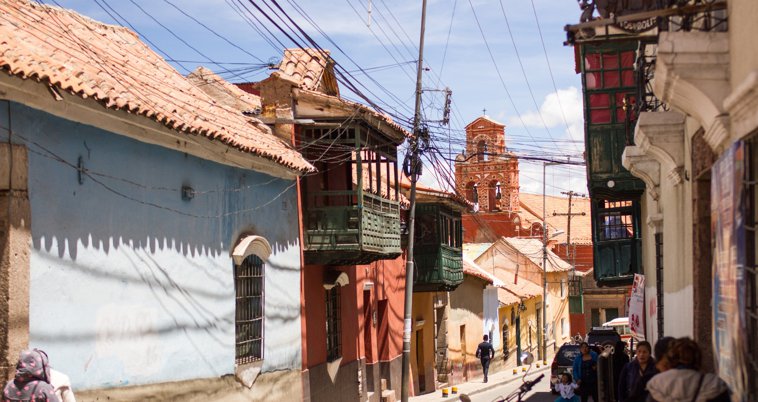 The city of Potosí(Potosi) is a living testament to the once-mighty Spanish Empire's quest for wealth during the colonial era. It's impossible to explore Potosí without encountering the imposing cerro Rico(Rich Mountain), which looms over the city. This mountain, once the world's most significant source of plata(silver), has a rich and somewhat ominous history. For centuries, it was mined mercilessly by indigenous and African slave labor, and the wealth it generated flowed into the coffers of the Spanish crown. Today, the cerro Rico stands as a Patrimonio de la Humanidad de la UNESCO(UNESCO World Heritage Site) and a poignant symbol of the price paid for the colonial riches.
The city of Potosí(Potosi) is a living testament to the once-mighty Spanish Empire's quest for wealth during the colonial era. It's impossible to explore Potosí without encountering the imposing cerro Rico(Rich Mountain), which looms over the city. This mountain, once the world's most significant source of plata(silver), has a rich and somewhat ominous history. For centuries, it was mined mercilessly by indigenous and African slave labor, and the wealth it generated flowed into the coffers of the Spanish crown. Today, the cerro Rico stands as a Patrimonio de la Humanidad de la UNESCO(UNESCO World Heritage Site) and a poignant symbol of the price paid for the colonial riches.
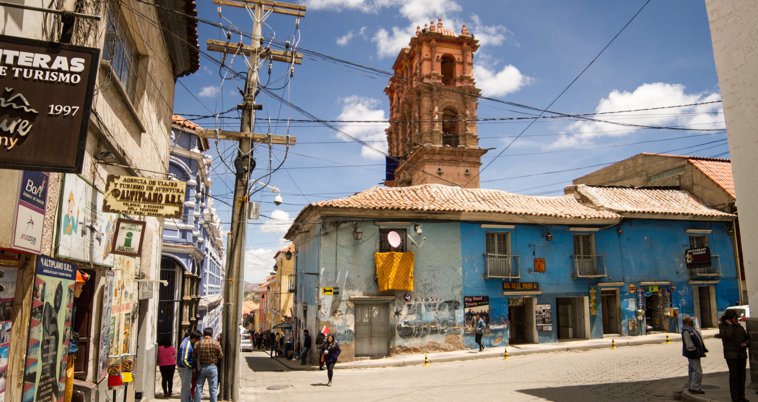 Potosí's historic center is another highlight, boasting well-preserved colonial architecture, narrow cobblestone streets, and ornate churches, including the breathtaking Iglesia de San Francisco(Iglesia de San Francisco). The city's Casa de la Moneda(The Mint), is particularly fascinating. This mint produced the famous Spanish silver dollars known as real de a ocho(piece of eight). Visitors can explore the intricacies of colonial minting techniques and learn about Potosí's pivotal role in global economic history.
Potosí's historic center is another highlight, boasting well-preserved colonial architecture, narrow cobblestone streets, and ornate churches, including the breathtaking Iglesia de San Francisco(Iglesia de San Francisco). The city's Casa de la Moneda(The Mint), is particularly fascinating. This mint produced the famous Spanish silver dollars known as real de a ocho(piece of eight). Visitors can explore the intricacies of colonial minting techniques and learn about Potosí's pivotal role in global economic history.
Piece of Eight
The Spanish silver dollar was a prominent world currency during its time. Minted from the vast silver reserves of the cerro Rico, these coins were widely used in Europe, Asia, and the Americas in the 16th century, becoming a de facto world currency. The silver dollars were even legal tender in the United States until the Coinage Act of 1857!
The Spanish silver dollars were referred to as a real de a ocho (piece of eight reales), because they were worth eight reales, another Spanish coin. Over time, the term peso, which means weight in Spanish, became associated with this currency, which is why you'll find currencies with the name peso in several Spanish-speaking countries today.
Be sure to check out the Convento de Santa Teresa(Santa Teresa’s Convent), a serene retreat that reveals yet another layer of the city's colonial past. This well-preserved convent, founded in the 17th century, is a place of quiet reflection with its charming cloisters, colonial art, and a glimpse into the daily life of the Carmelite nuns who once resided here.
Now, let’s go over some vocabulary related to Potosí:
Salar de Uyuni: Flattest Place on Earth
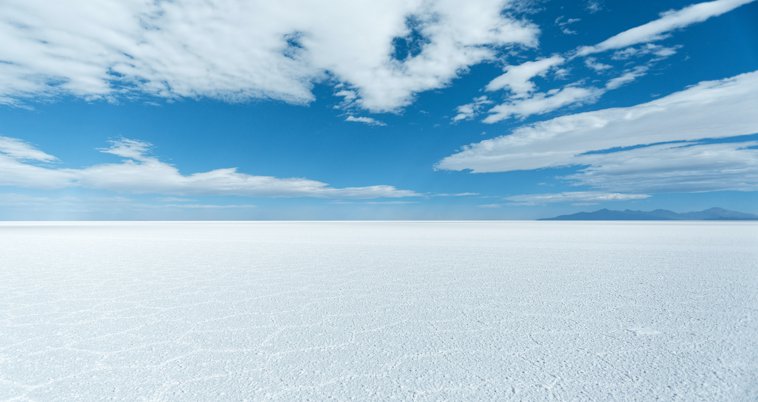 The salar de Uyuni(Salar de Uyuni), the world's largest salar(salt flat), is an otherworldly natural wonder that beckons adventurers from across the globe. Covering over 10,000 square kilometers in southwestern Bolivia, this vast expanse of dazzling white salt seems to stretch endlessly to the horizon. The sheer flatness of the terrain, particularly after a rain shower, creates a surreal efecto espejo(mirror effect), reflecting the sky so perfectly that it becomes challenging to distinguish between earth and sky. Visiting during the rainy season, from December to March, can treat you to this extraordinary illusion, often described as "heaven on earth."
The salar de Uyuni(Salar de Uyuni), the world's largest salar(salt flat), is an otherworldly natural wonder that beckons adventurers from across the globe. Covering over 10,000 square kilometers in southwestern Bolivia, this vast expanse of dazzling white salt seems to stretch endlessly to the horizon. The sheer flatness of the terrain, particularly after a rain shower, creates a surreal efecto espejo(mirror effect), reflecting the sky so perfectly that it becomes challenging to distinguish between earth and sky. Visiting during the rainy season, from December to March, can treat you to this extraordinary illusion, often described as "heaven on earth."
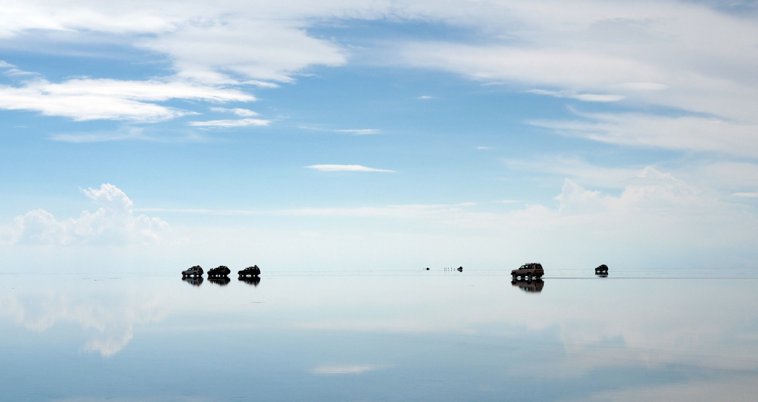 Apart from its ilusiones ópticas(optical illusions), the salar de Uyuni is home to the isla Incahuasi(Incahuasi Island), a rocky outcrop covered in massive cacti, where you can take a leisurely stroll and enjoy panoramic views of the salt flats.
Apart from its ilusiones ópticas(optical illusions), the salar de Uyuni is home to the isla Incahuasi(Incahuasi Island), a rocky outcrop covered in massive cacti, where you can take a leisurely stroll and enjoy panoramic views of the salt flats.
Just a short drive away from the salt flats, you'll discover Laguna Colorada(Laguna Colorada), a stunning red-hued lake nestled amidst the stark, high-altitude landscape. This vibrant coloration is due to the presence of algae and plankton, which attract countless flamencos(flamingos). Nearby is Sol de la Mañana(literally, Morning Sun), a geothermal area full of bubbling mud pools and steaming géiseres(geysers).
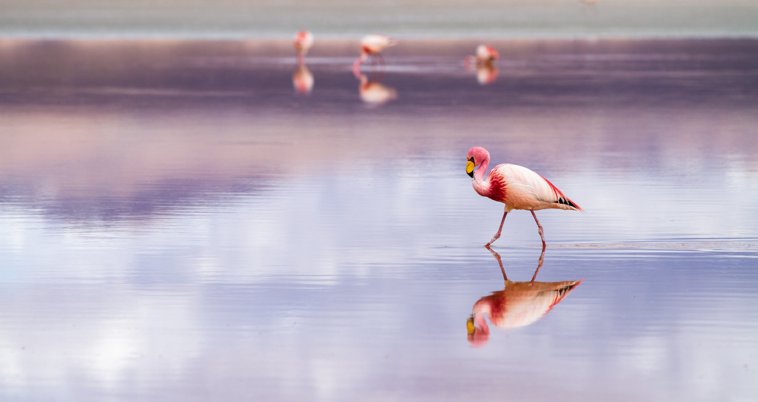 If you start your trip of the salt flats from the town of Uyuni(Uyuni), be sure to visit the Cementerio de Trenes(Train Cemetery), a fascinating and somewhat eerie attraction. Here, amidst the vast, high-altitude plains of the Bolivian Altiplano, rusting locomotoras(locomotives) and train carriages from a bygone era stand as haunting relics from a time when Uyuni was a bustling distribution hub for minerals. When the mining industry took a dive in the mid 20th century, the trains were abandoned. Today, the area serves as a museo a cielo abierto(open-air museum) of sorts, attracting tourists from all over the world.
If you start your trip of the salt flats from the town of Uyuni(Uyuni), be sure to visit the Cementerio de Trenes(Train Cemetery), a fascinating and somewhat eerie attraction. Here, amidst the vast, high-altitude plains of the Bolivian Altiplano, rusting locomotoras(locomotives) and train carriages from a bygone era stand as haunting relics from a time when Uyuni was a bustling distribution hub for minerals. When the mining industry took a dive in the mid 20th century, the trains were abandoned. Today, the area serves as a museo a cielo abierto(open-air museum) of sorts, attracting tourists from all over the world.
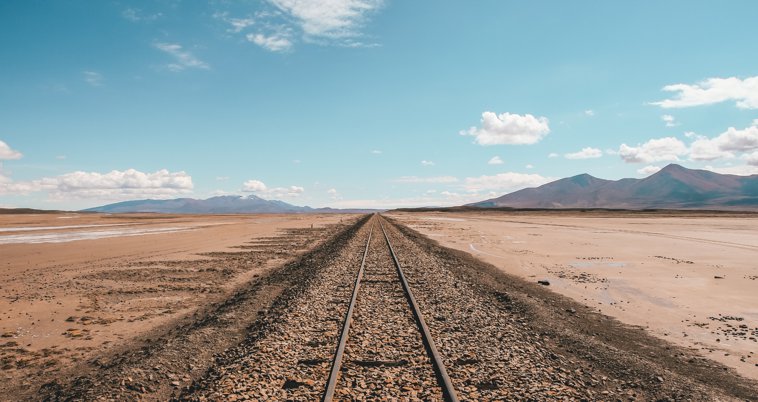 Here are some words that might be useful if you visit Uyuni:
Here are some words that might be useful if you visit Uyuni:
Sucre: Constitutional Capital
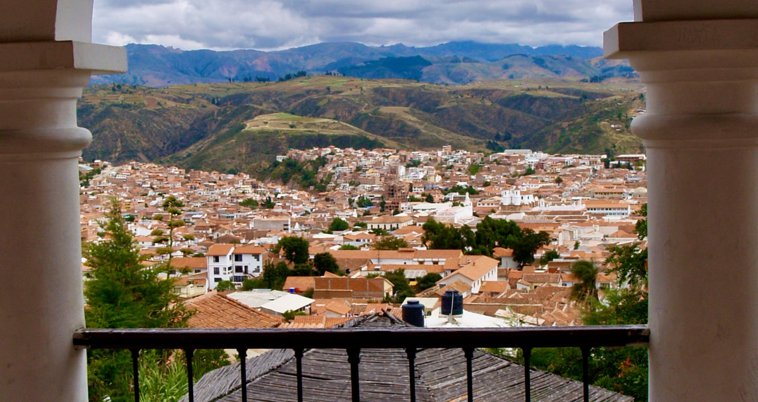
While La Paz is Bolivia’s administrative capital, where the executive branch of the government is located, Sucre(Sucre) is the country's constitutional capital, housing the judiciary and serving as a hub of cultural and historical significance.
The city's colonial architecture is a testament to its rich history, as it played a pivotal role in Bolivia's struggle for independence from Spanish colonial rule. Sucre is home to numerous well-preserved colonial buildings, including the stunning Catedral Metropolitana de Sucre(Metropolitan Cathedral of Sucre) and the Casa de la Libertad(House of Freedom), where Bolivia's Declaración de Independencia(Declaration of Independence) was signed in 1825. Today, the latter serves as a museum where visitors can go to gain a deeper understanding of the city's pivotal contribution to Bolivia's struggle for independence.
The country of Bolivia and the city of Sucre are named after two key figures in South America's fight for independence. Simón Bolívar(Simón Bolívar), known as El Libertador(the Liberator), was the driving force behind the region's liberation from Spanish colonial rule. Bolivia, liberated with his help, was named in his honor in 1825.
Bolivar’s chief lieutenant Antonio José de Sucre(Antonio José de Sucre), meanwhile, played a pivotal role in securing victory in the Battle of Ayacucho in 1824, effectively ending Spanish rule in South America. The city of Chuquisaca(Chuquisaca), as Sucre was then known, was named after the young general as a tribute to his contributions in 1839.
Walking through Sucre's cobblestone streets feels like stepping back in time, with its whitewashed facades, charming plazas, and vibrant markets. The city also boasts a pleasant climate, making it an ideal place to explore on foot. Parque Bolívar(Bolivar Park) is a popular spot for relaxation, and the nearby Monasterio de la Recoleta(Recoleta Monastery) offers panoramic views of the city. Moreover, Sucre's culinary scene, features traditional Bolivian dishes like salteñas(salteñas), which are delicious Bolivian meat pies, and api(api), a colorful drink made from purple maize.
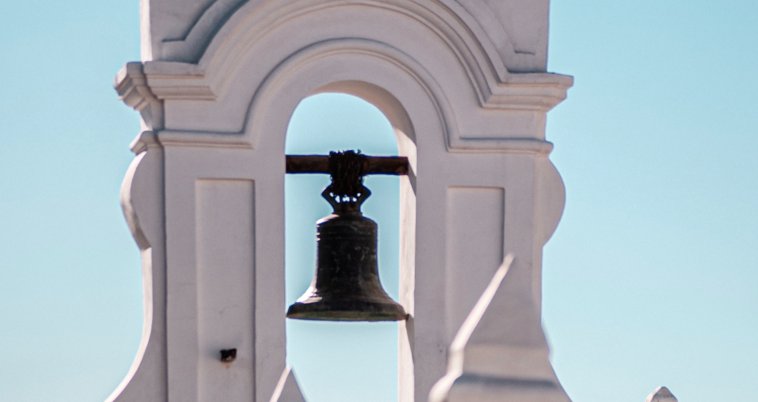 Let’s go over some vocabulary related to Sucre:
Let’s go over some vocabulary related to Sucre:
These are just some of the exciting destinations Bolivia has to offer. From the salar de Uyuni to centuries-old cities, this country is a truly unique place that is sure to leave you with unforgettable memories of your South American journey.
Did all this talk about Bolivia spark your travel curiosity? Check out the following articles for more great destinations to consider!














